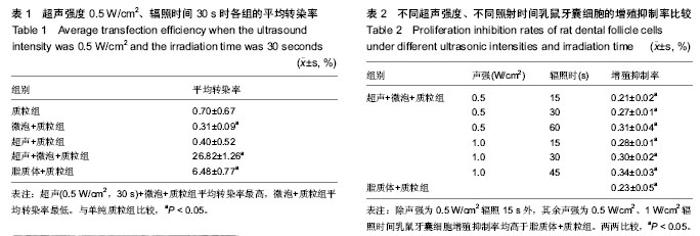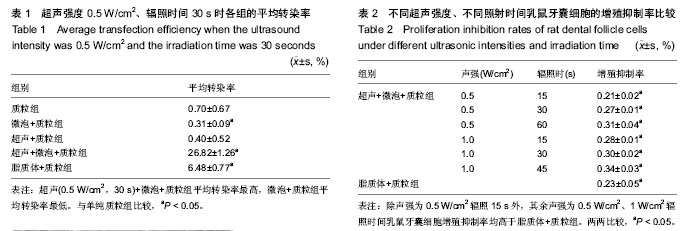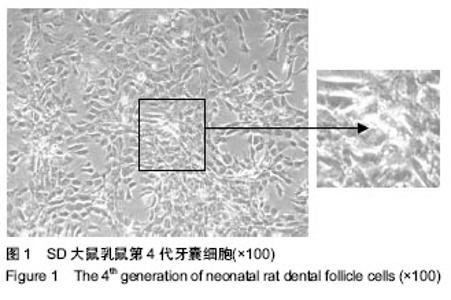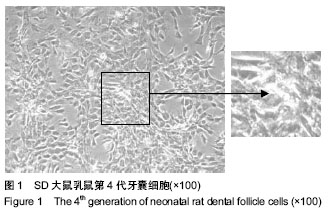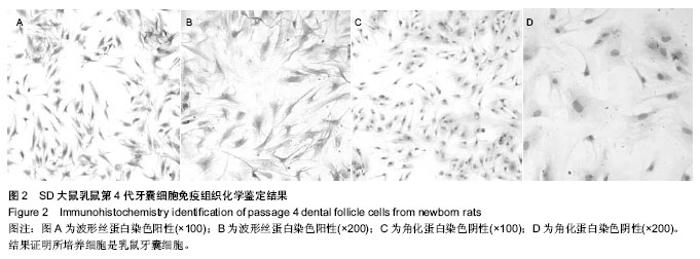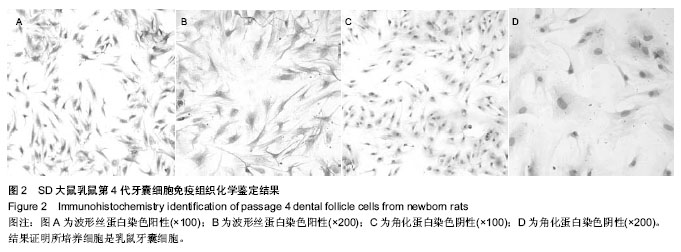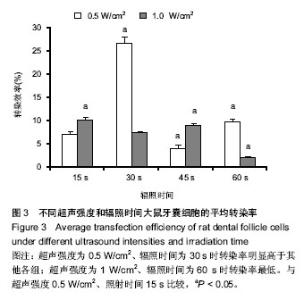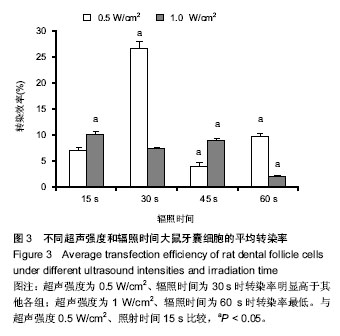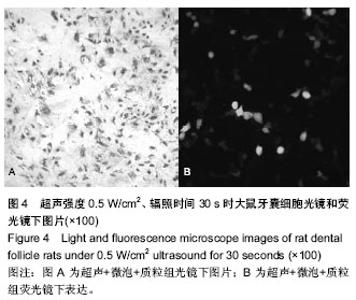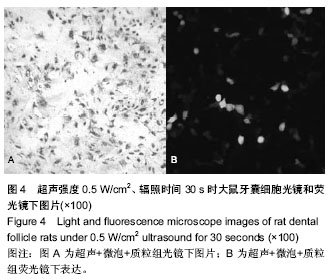| [1] Yen AH, Ye lick PC. Dental tissue regeneration–a mini-review. Gerontology. 2010;57(1): 85-94.
[2] Yokoi T, Saito M, Kiyono T, et al. Establishment of immortalized dental follicle cells for generating periodontal ligament in vivo. Cell tissue Res. 2007;327(2): 301-311.
[3] Zhao M, Xiao G, Berry JE, et al. Bone morphogenetic protein 2 induces dental follicle cells to differentiate toward a cementoblast / osteoblast phenotype. J Bone Miner Res.2002; 17(8): 1441-1451.
[4] He J, Rosen CJ, Adams DJ, et al. Postnatal growth and bone mass in mice with IGF-I haploinsufficiency.Bone.2006;38(6): 826-835.
[5] Luo J, Zhou X, Diao L, et al. Experimental research on wild-type p53 plasmid transfected into retinoblastoma cells and tissues using an ultrasound microbubble intensifier. J Int Med Res.2010;38(3): 1005-1015.
[6] 孙钦峰,杜芳,徐岩,等.超声微泡破裂法促进骨形态发生蛋白-2在小鼠骨骼肌表达的研究[J].华西口腔医学杂志, 2009, 27(1): 84-87
[7] Honda MJ, Imaizumi M, Tsuchiya S, et al. Dental follicle stem cells and tissue engineering. Journal of oral science, 2010; 52(4): 541-552.
[8] Yokoi T, Saito M, Kiyono T, et al. Establishment of immortalized dental follicle cells for generating periodontal ligament in vivo. Cell tissue Res.2007;327(2): 301-311.
[9] 杨尊,刘婷,郑鸿,等. SV40Tag基因片段转染SD大鼠牙囊细胞后相关生物学特性初步研究[J]. 华西口腔医学杂志, 2013, 31(1):4-7,12.
[10] El-Aneed A. An overview of current delivery systems in cancer gene therapy[J]. J Control Release.2004;94(1): 1-14.
[11] 孙钦峰,刘玉,杨丕山,等.超声介导微泡破裂法促进外源性基因在小鼠 NIH3T3 细胞中的表达.华西口腔医学杂志, 2008, 26(2): 198-200.
[12] Wang JF, Wang JB, Chen H, et al. Ultrasound mediated microbubble destruction enhances gene transfection in pancreatic cancer cells.Advances in therapy. 2008;25(5): 412-421.
[13] Qian Z,Sagers RD, Pitt WG. Investigation of the mechanism of the bioacoustic effect. J Biomed Mater Res. 1999;44(2): 198-205.
[14] Ward M, Wu J, Chiu J. Experimental study of the effects of optison concentration on sonoporation in vitro. Ultrasound Med Biol.2000; 26(7): 1169-1175.
[15] 区文超,修建成,赖文岩,等.白蛋白包裹微泡介导报告基因转染心肌细胞的实验研究[J].中华超声影像学杂志, 2004,13(3): 212-214.
[16] Jose L, Tlaxca, Christopher R. Anderson, et al.Analysis of in vitro Transfection by Sonoporation Using Cationic and Neutral Microbubbles.Ultrasound Med Biol.2010;36(11): 1907-1918.
[17] Qiu Y, Luo Y, Zhang Y, et al.The correlation between acoustic cavitation and sonoporation involved in ultrasound mediated DNA transfection with polyethylenimine (PEI) in vitro. J Control Release.2010;145(1): 40-48. |
